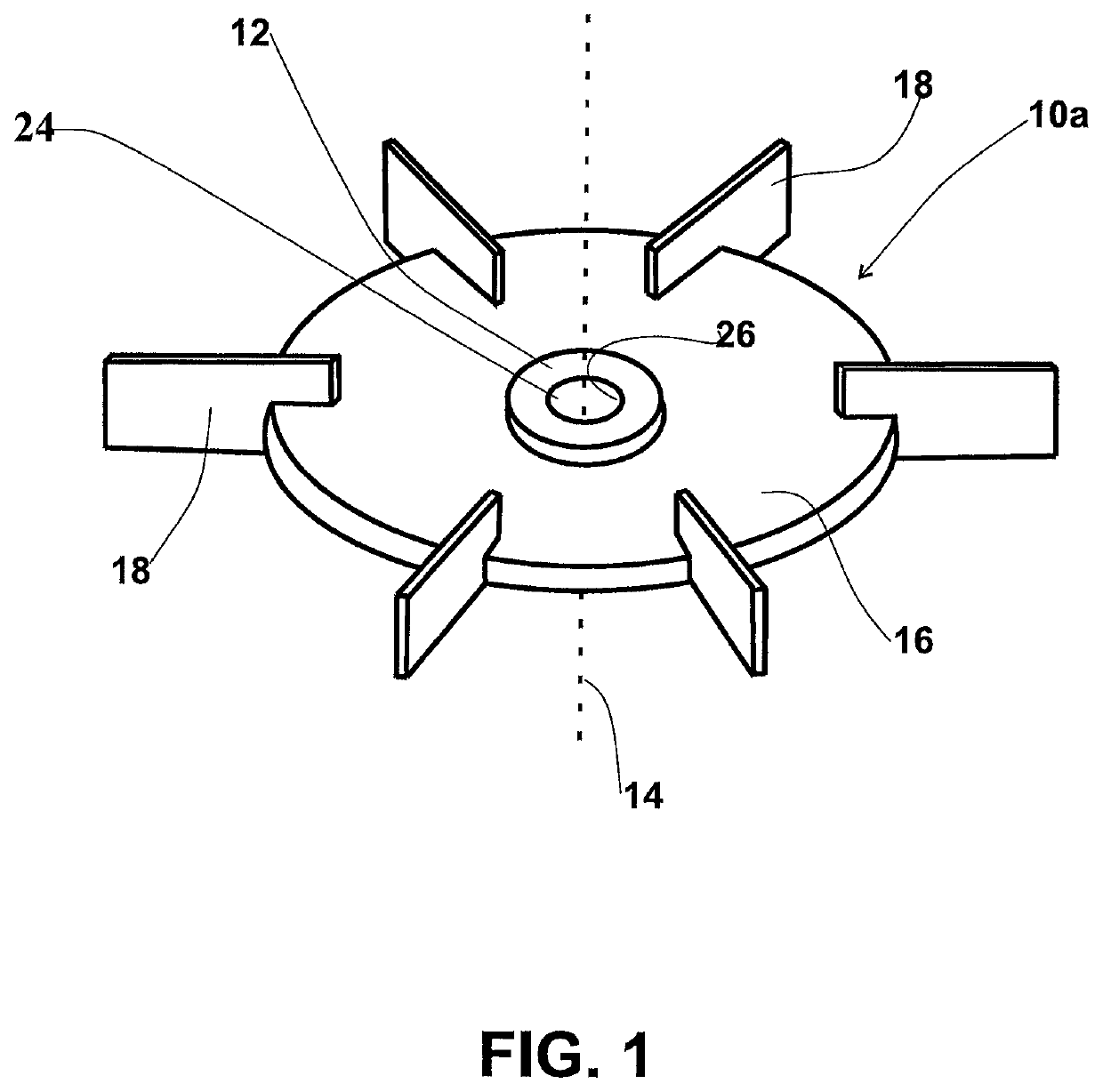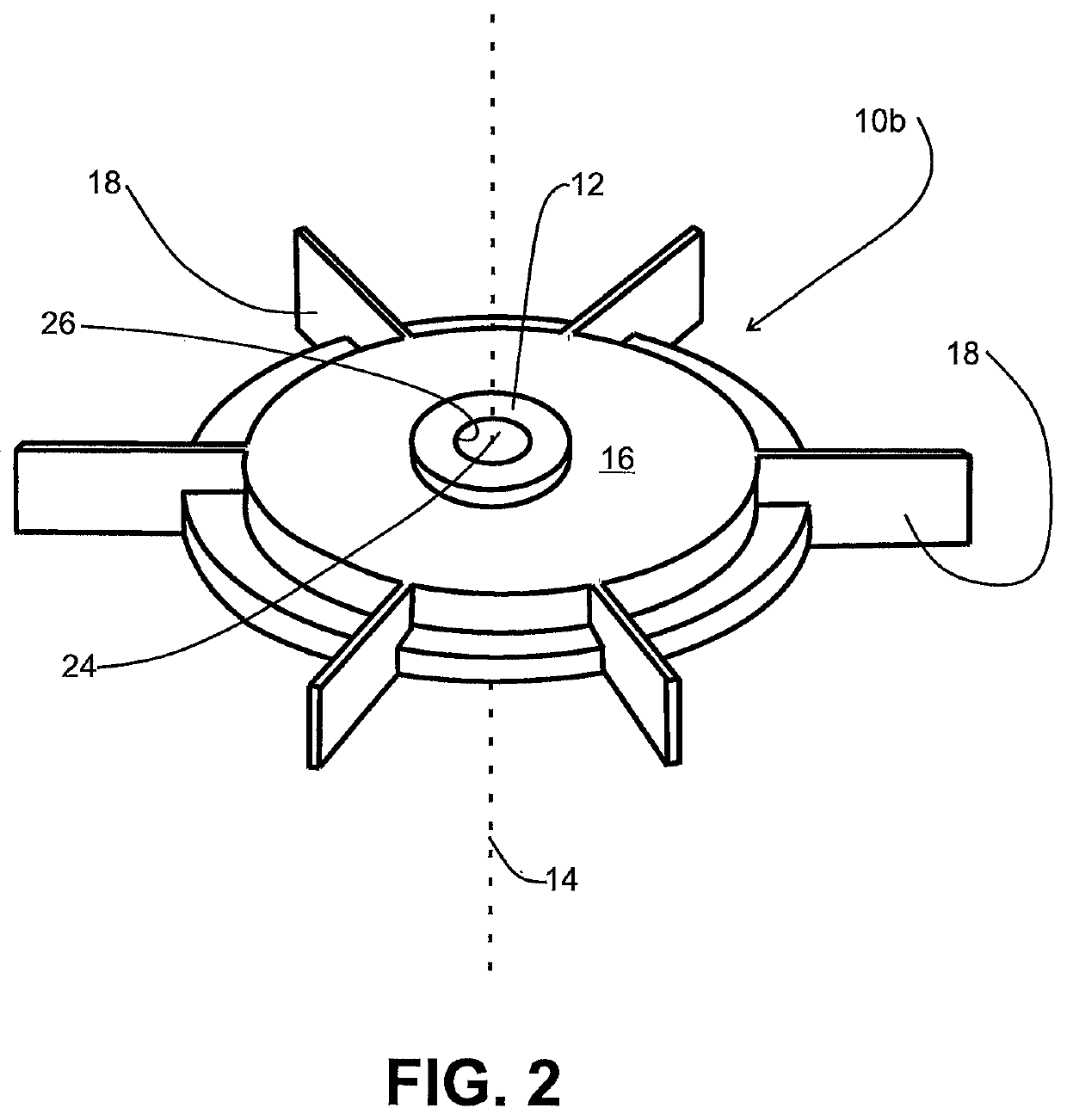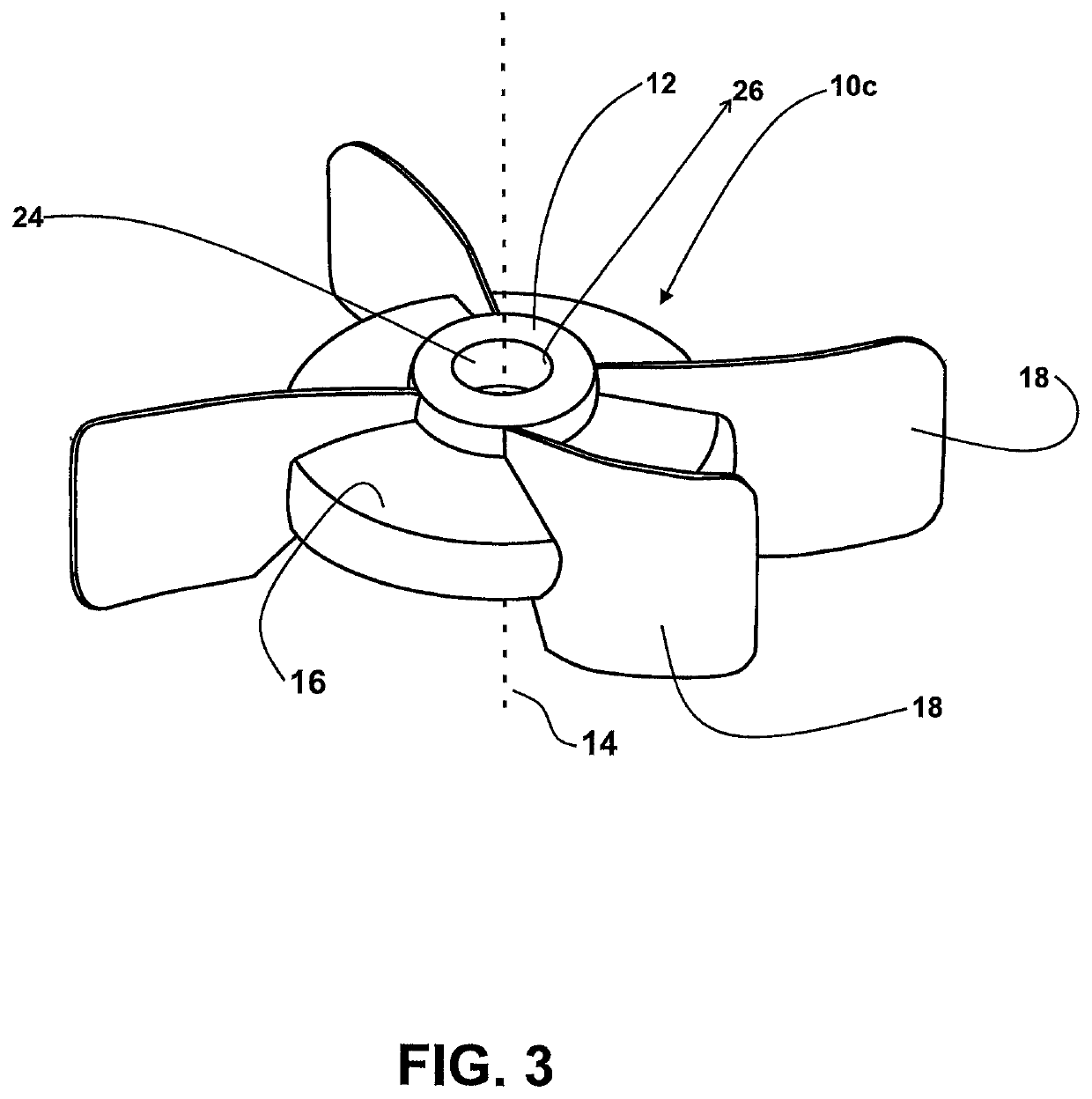Composite agitator
a technology of agitator and composite material, which is applied in the field of agitator, can solve the problems of large glass vessel, difficult to manufacture, and essentially impossible after a certain size, and achieve the effects of good temperature resistance, excellent chemical resistance, and light weigh
- Summary
- Abstract
- Description
- Claims
- Application Information
AI Technical Summary
Benefits of technology
Problems solved by technology
Method used
Image
Examples
Embodiment Construction
[0022]As used herein, “agitator” is intended to mean the rotating portion of a mixer having blades, or the equivalent, that cause mixing turbulence. Such agitators have also been historically referred to in the art as turbines or impellers.
[0023]The invention is a mixing agitator that overcomes or reduces disadvantages associated with glass coated mixing agitators in the prior art as discussed in the Background of the invention.
[0024]In particular, the blades of the agitator of the invention, being made of fluorinated polymer, eliminates the problem concerning damage at corners and edges of glass coated blades. In accordance with the invention, blades can thus be made with shapes, sharp edges and corners, while retaining other advantages of glass coated glass coated agitators including chemical resistance and good heat resistance.
[0025]In addition, the agitator weight is dramatically reduced thus requiring less energy input to cause the agitator to reach a desired high speed and to ...
PUM
| Property | Measurement | Unit |
|---|---|---|
| temperatures | aaaaa | aaaaa |
| strength | aaaaa | aaaaa |
| temperature | aaaaa | aaaaa |
Abstract
Description
Claims
Application Information
 Login to View More
Login to View More - R&D
- Intellectual Property
- Life Sciences
- Materials
- Tech Scout
- Unparalleled Data Quality
- Higher Quality Content
- 60% Fewer Hallucinations
Browse by: Latest US Patents, China's latest patents, Technical Efficacy Thesaurus, Application Domain, Technology Topic, Popular Technical Reports.
© 2025 PatSnap. All rights reserved.Legal|Privacy policy|Modern Slavery Act Transparency Statement|Sitemap|About US| Contact US: help@patsnap.com



